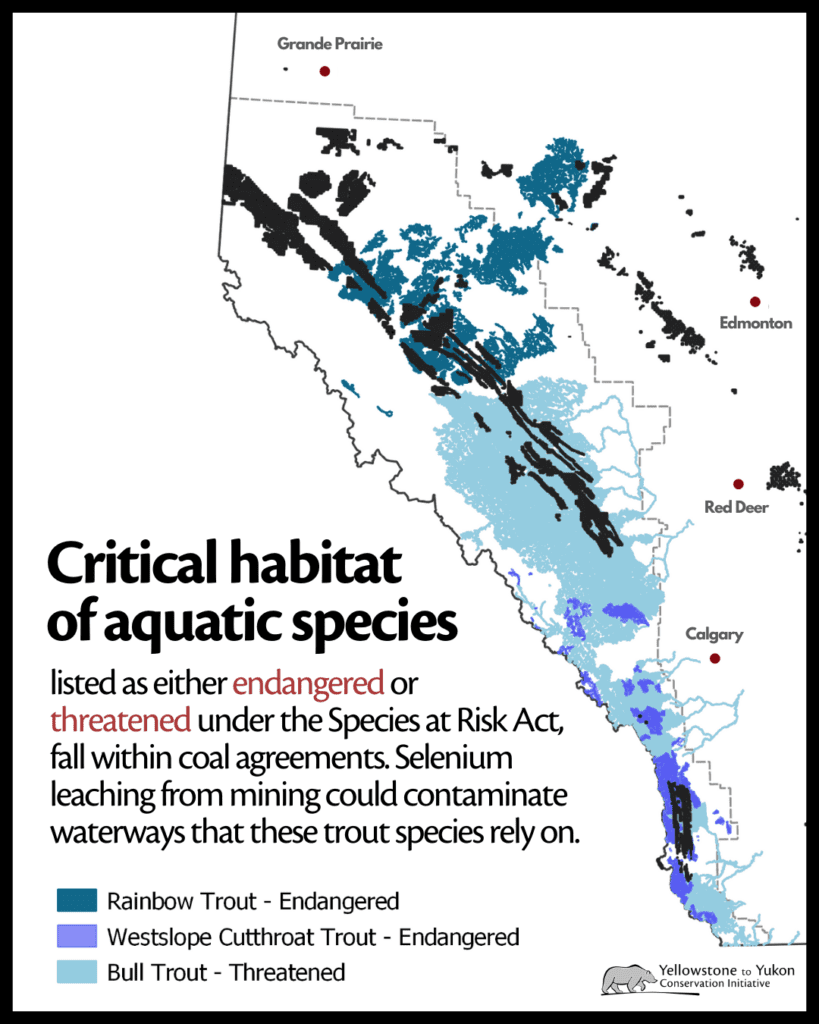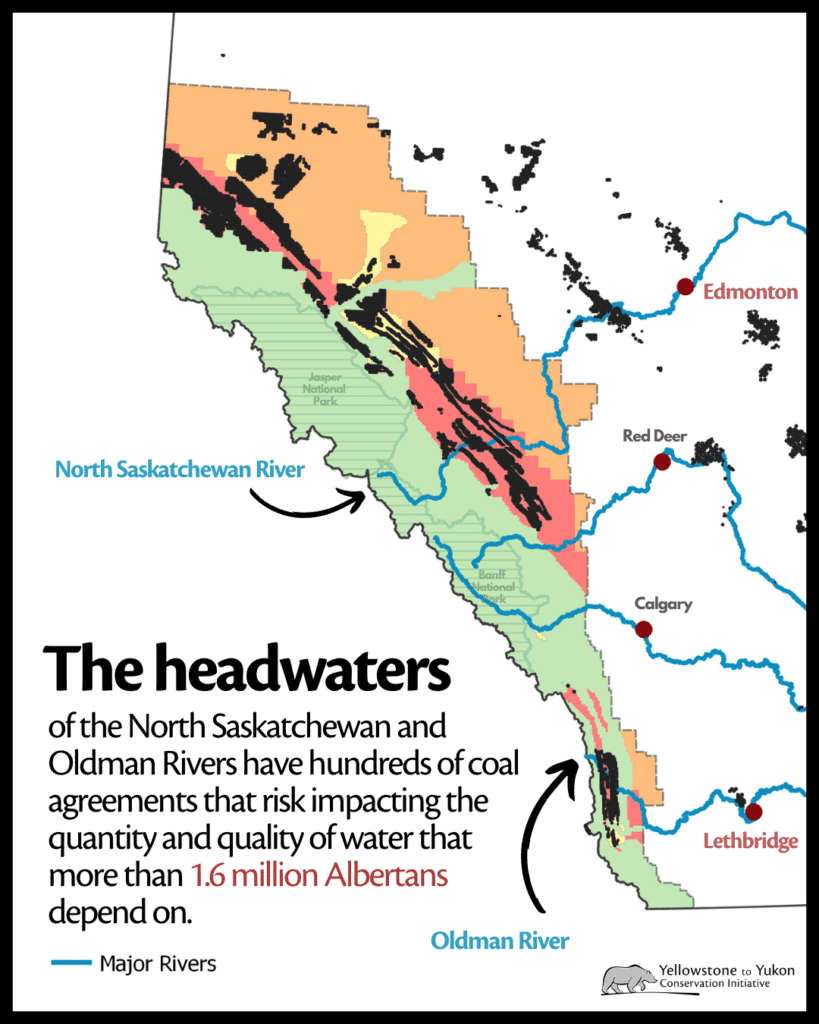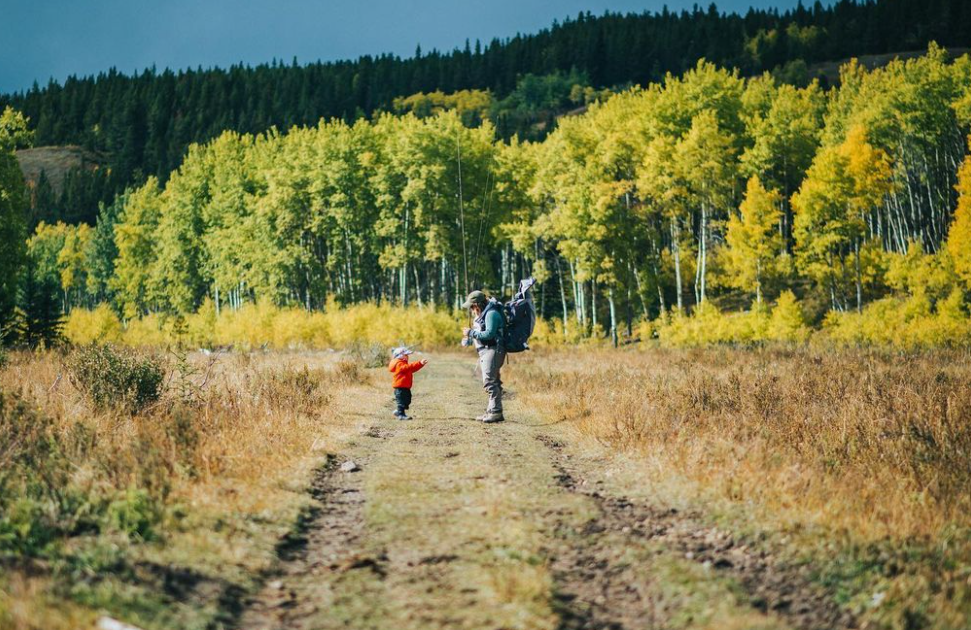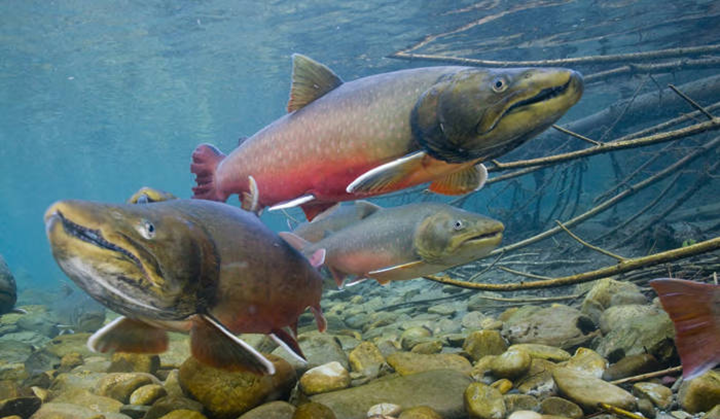Despite challenges, you are sparking change for our shared planet.
The Alberta portion of the Yellowstone to Yukon region spans more than 28,185 square miles (73,000 square kilometers) of incredible Rocky Mountains and foothills.
Alberta’s Eastern Slopes has the highest percentage of protected lands in the entire Yellowstone to Yukon region. The headwaters found in the Eastern Slopes provide 90 percent of Alberta’s drinking water, and its iconic mountain landscapes are where we find rejuvenation.
Headwaters and gravel-bed river ecosystems are also important habitat for spectacular species of native fish, large mammals, birds and other wildlife.
For all of these reasons and more, it’s hard not to love our headwaters region!
“Death by a thousand cuts”
Alberta’s provincial and public lands in the Eastern Slopes have been put at risk since the government revoked the 1976 Coal Policy in June 2020, without any consultation with Albertans. This is a serious concern for wildlife, habitat connectivity, water and the healthy ecosystems that support our ability to enjoy nature’s offerings – not just in Alberta, but in neighboring provinces.
The impacts of coal mines in Alberta truly know no borders.
Rob Buffler is an avid angler and restoration ecologist who has worked extensively on land and watershed conservation efforts in the Yellowstone to Yukon region for over two decades. He says there is a lot already going against Alberta’s Eastern Slopes.
“Dams, invasive species, irrigation withdrawals, and dirt logging and motorized recreation roads have long been some of the biggest issues facing threatened fish species and other wildlife in this region,” says Rob. “The threat of coal mines in vital habitat is another layer that inevitably will have both short- and long-term impacts. It’s death by a thousand cuts.”
“The threat of coal mines in vital habitat is another layer that inevitably will have both short- and long-term impacts.”
Rob Buffler, angler and experienced restoration ecologist
Coal mining in these wild places has a literal trickle-down effect from waters, to wildlife, to people.
Waste material from the coal mining process leaches toxic selenium and other chemicals into trout-bearing rivers. Sadly, selenium is known to impact the reproductive abilities of trout. The Oldman, Castle, Crowsnest, and other rivers are critical habitat for threatened westslope cutthroat and bull trout, jeopardized with new mine developments.


Exploratory activities for proposed mines, such as networks of roads and drill holes, are already impacting the landscape, affecting connectivity and habitat for threatened grizzly bears and woodland caribou in a key part of the Yellowstone to Yukon corridor. Dirt mine roads also lead to erosion and increase the amount of sediment in nearby water sources — bad news for trout spawning habitat.
Of course, this is also a people issue. Some of the rivers impacted by mines cross provincial borders and run through prairie communities and towns all the way to Hudson’s Bay.
The impacts of downstream selenium contamination on fish and drinking water supplies from decades of coal mining in British Columbia’s Elk Valley provides a cautionary tale into the future of Alberta’s headwaters if new coal mines under exploration are fully approved.
Your voice has made a world of difference.
All hope is not lost. The silver lining in this daunting situation is the tens of thousands of people like you who have spoken out – loudly – against coal mines in Alberta’s headwaters. We have seen a unified response from folks across political spectrums, and those who rely on and love these landscapes for many reasons.
Celebrities have also spoke out on the issue, including Heartland television series’ Amber Marshall, and world-famous musicians like k.d. lang, Corb Lund and Paul Brandt.

Coal policy reinstated; but the work continues
This public outcry resulted in the government’s recent reinstatement of the Coal Policy, and a commitment to consult the public before changing the policy.
However, now more than ever, we must keep the pressure up. With over 1,000 coal leases and lease applications still active, future coal mines, including the Grassy Mountain mine project, are still a possibility in many parts of Alberta and the Eastern Slopes.
Looking forward, we will continue to hold the government accountable for land-use planning and comprehensive consultation with First Nations and other Albertans, and to campaign for no surface mining exploration or development in our headwaters.
While we need funds to react to threats to wild places, wildlife, waters and people, we also need your voice to create a turning point on awareness and action. You are essential in sparking change for our shared planet.
Thank you for all you have done to keep wild places in Alberta connected and protected so people and nature far and wide can thrive.
How can you get involved?
- Stay informed: sign up for Y2Y’s newsletters and action alerts.
- Learn more about our work in Alberta’s headwaters region and follow Love Your Headwaters, a joint effort between Y2Y and CPAWS, on Facebook and Instagram.
- Visit the Niitsítapi Water Protectors’ page to learn more about the numerous open-pit coal mine projects that are being proposed within Blackfoot Territory.


